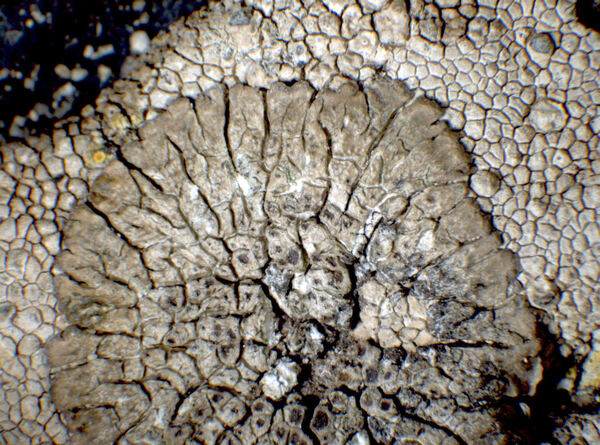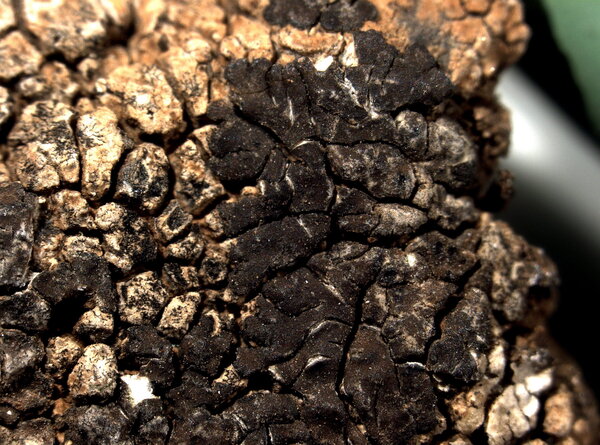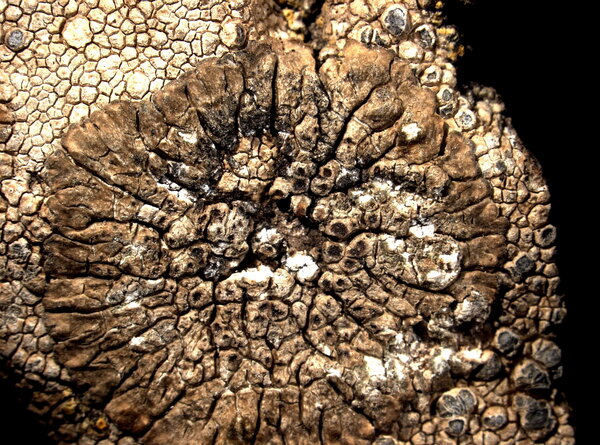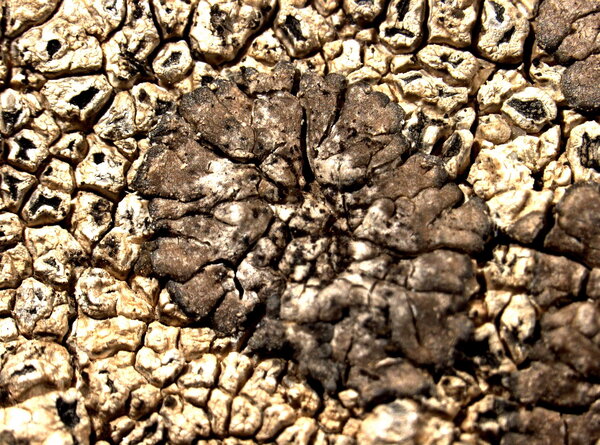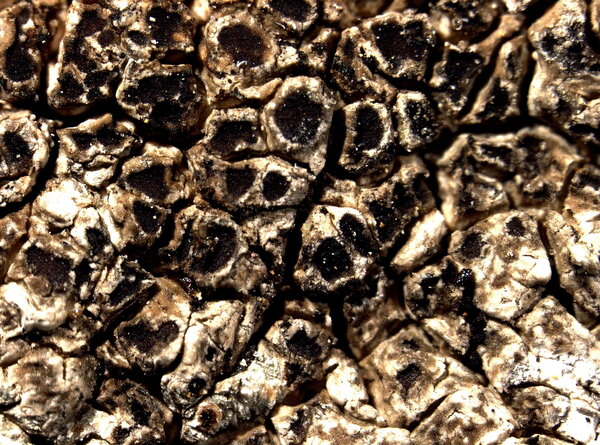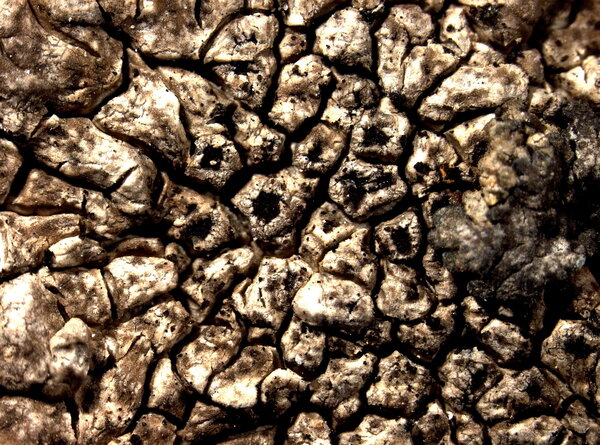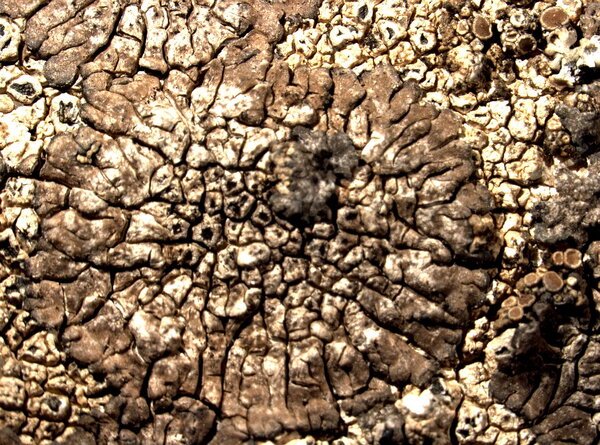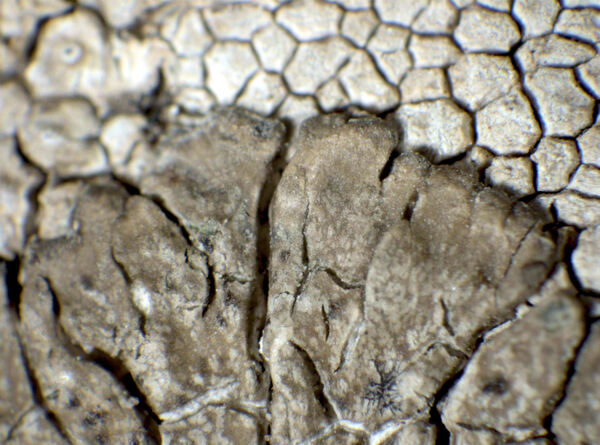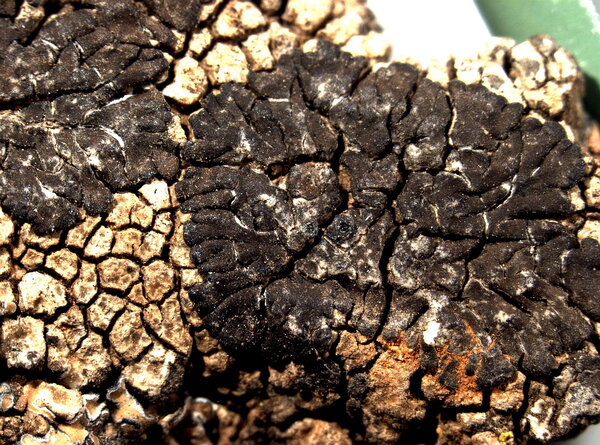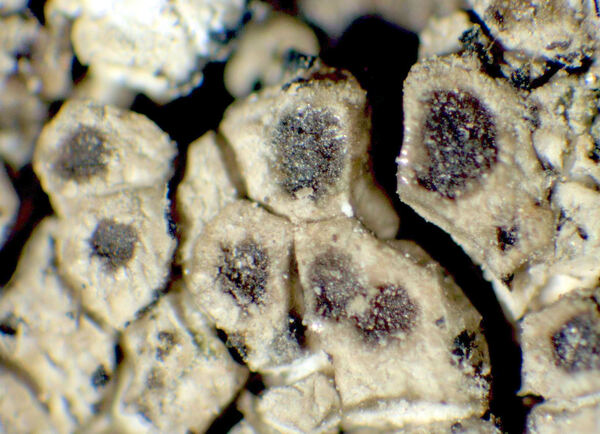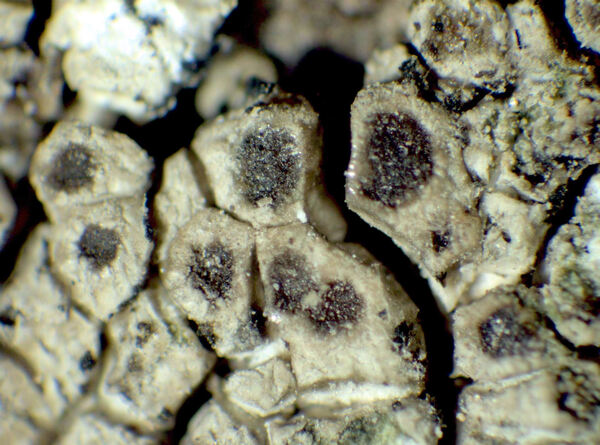Lobothallia parasitica (B. de Lesd.)
Provisionally placed here, ICN Art. 36.1b.. Basionym: Aspicilia parasitica B. de Lesd. - Bull. Soc. Bot. France, 78: 728, 1932.
Synonyms: Lecanora parasitica (B. de Lesd.) Zahlbr.
Distribution: N - Frl, Lomb (Brackel 2013), Piem (Giordani & al. 2014), Lig (Loppi & Mariotti 1995). C - Tosc (Loppi & Mariotti 1995), Umb (Genovesi & al. 2001, Ravera & al. 2006), Laz (TSB 17773), Sar (Monte 1993, Loppi & Mariotti 1995, Rizzi & al. 2011, Giordani & al. 2013). S - Bas (Nimis & Tretiach 1999), Si (Nimis & al. 1996b).
Description: Thallus crustose-placodioid, episubstratic, growing on the thalli of other crustose lichens, pale to dark grey, brownish grey or greenish grey, generally epruinose, rimose-areolate in central parts, lobed at margins, forming distinct orbicular rosettes to a few cm in diam. Lobes contiguous, usually flattened at least in distal parts, never overlapping, 0.3-0.8(-1) mm long; Apothecia lecanorine-aspicilioid, generally numerous and often deformed by mutual compression, with a black, epruinose disc and a thin, scarcely raised thalline margin. Epithecium brown, 17-35 µm thick; hymenium colourless, 50-100 µm high, K/I+ blue; paraphyses usually simple, tightly compacted, with globose, 2-3 µm wide apical cells: hypothecium colourless, 25-35(-40) µm thick, underlain by an algal layer. Asci 8-spored, oblong-clavate, the thin outer coat K/I+ blue, the wall and apical dome K/I-. Ascospores 1-celled, hyaline, ellipsoid to subglobose, 11-14 x 6-9 µm. Pycnidia appearing as black dots, immersed, with a colourless wall. Conidia bacilliform, (4-)6-7 x c. 1 µm. Photobiont chlorococcoid. Spot tests: thallus K+ reddish brown or K-, C-, KC-; medulla K+ yellow. Chemistry: medulla with stictic acid.Note: a mainly Mediterranean lichen found on steeply inclined, sunny faces of siliceous rocks at relatively low elevations, differing from L. radiosa in the parasitic habit and in the presence of stictic acid. However, since L. radiosa, in its present broad circumscription, is chemically variable and sometimes starts the life-cycle on other crustose lichens, this could be also one of its several forms.
Growth form: Crustose placodiomorph
Substrata: rocks
Photobiont: green algae other than Trentepohlia
Reproductive strategy: mainly sexual
paras crustose lichens
Commonnes-rarity: (info)
Alpine belt: absent
Subalpine belt: absent
Oromediterranean belt: absent
Montane belt: extremely rare
Submediterranean belt: extremely rare
Padanian area: absent
Humid submediterranean belt: rare
Humid mediterranean belt: rather rare
Dry mediterranean belt: very rare
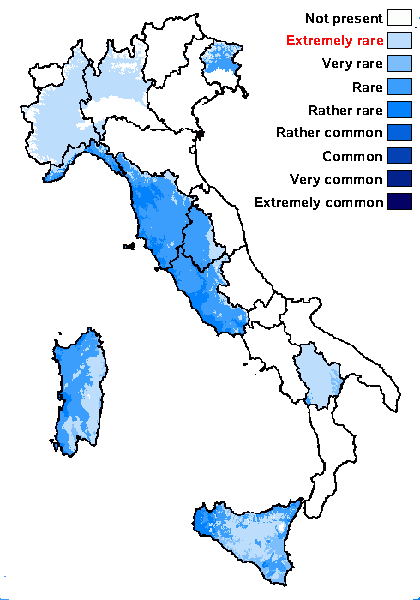
Predictive model
Herbarium samples
Growth form: Crustose placodiomorph
Substrata: rocks
Photobiont: green algae other than Trentepohlia
Reproductive strategy: mainly sexual
paras crustose lichens
Commonnes-rarity: (info)
Alpine belt: absent
Subalpine belt: absent
Oromediterranean belt: absent
Montane belt: extremely rare
Submediterranean belt: extremely rare
Padanian area: absent
Humid submediterranean belt: rare
Humid mediterranean belt: rather rare
Dry mediterranean belt: very rare

Predictive model
| Herbarium samples |
